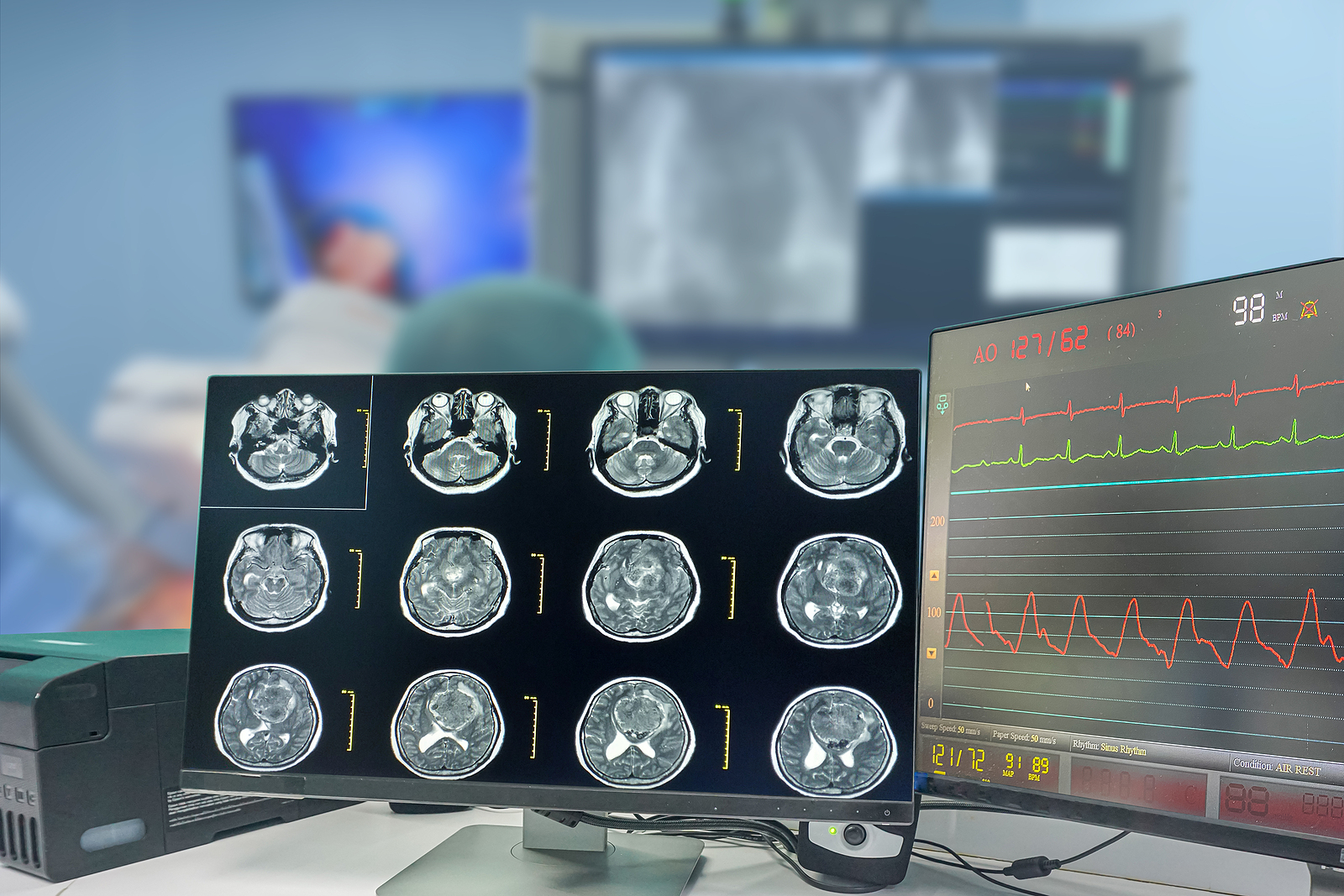- News ›
- How New Treatment Options May Help Glioblastoma Patients
How New Treatment Options May Help Glioblastoma Patients

There are many different kinds of brain tumours, with the primary distinction being between benign (non-cancerous) and malignant (cancerous) types. Of the latter category, a glioblastoma is among the most aggressive.
For that reason, a glioblastoma diagnosis is a very serious matter, and this will require urgent attention. Without treatment, the spread would be rapid and soon be fatal. However, effective treatment, while not offering an outright cure, can gain significant relief from the symptoms through the suppression of tumour growth, as well as extended life.
Left unchecked, glioblastoma can lead to further aggressive tumour growth that compresses the adjacent area of the brain and can impede its function, disrupting day-to-day activities. For many patients, one of the main benefits of the treatment is its power to enable life to be lived relatively normally for as long as possible.
In cancer types that metastasise throughout the body, radiotherapy can usefully be delivered using techniques such as placing the patient in a linear accelerator.
By contrast, the more localised nature of glioblastoma means that the most effective treatments involve stereotactic radiosurgery, which provides very concentrated beams of radiation aimed with a high level of precision that maximise the impact of the tumour while minimising the exposure of the surrounding brain tissue.
It may be that stem cell research helps add further options in due course, but the central role of radiotherapy, aided by greater precision both in delivery and targeting through the use of advanced scanning methods, is a crucial part of treatment at the present time.
However, once established as being beneficial, any other form of treatment may be used in combination with radiotherapy, rather than as a standalone alternative. This is already true when surgery is used to excise brain tumours, as well as existing chemotherapy treatments.
An example of this may be stem cell therapy. This is an area of science that is much younger than radiotherapy (which has been used to treat cancer patients since the turn of the 20th century), but offers much promise in the field of brain tumour treatment.
This implies that there is an area of huge potential, with techniques such as gene editing and the use of nanoparticles in delivery offering substantial areas for research and development in this area.
However, this is for the future and for those who are dealing with a glioblastoma now, it is imperative to seek the best treatment right now.
An area where the development of radiotherapy has been beneficial and can hold out the prospect of increasing benefits for glioblastoma sufferers lies in the precision with which radiotherapy can be delivered.
A few months ago, the Mayo Clinic highlighted one such example, where research into the use of advanced imaging techniques proved highly fruitful, enabling the most aggressive areas of glioblastomas to be identified.
This enabled the radiotherapy to be directed with even greater precision at these specific points in the tumour. The studies, published in The Lancet, showed that patient outcomes were substantially improved.
Mayo Clinic radiation oncologist Dr Sujay Vora commented: “I am hopeful that this is the first step of many, where we can continue to move that needle and allow patients to live longer and live well.”
Learn more about our advanced radiotherapy and neurosurgical treatments for glioblastoma on the Queen Square website.
For that reason, a glioblastoma diagnosis is a very serious matter, and this will require urgent attention. Without treatment, the spread would be rapid and soon be fatal. However, effective treatment, while not offering an outright cure, can gain significant relief from the symptoms through the suppression of tumour growth, as well as extended life.
Left unchecked, glioblastoma can lead to further aggressive tumour growth that compresses the adjacent area of the brain and can impede its function, disrupting day-to-day activities. For many patients, one of the main benefits of the treatment is its power to enable life to be lived relatively normally for as long as possible.
Precision Radiotherapy For Glioblastoma
This is particularly significant in relation to one particular feature of glioblastomas. While very aggressive, this form of cancer, arising in the glial cells, will commonly spread into other parts of the brain and spinal cord, but rarely migrate to other parts of the body. This localised metastasis means that the kind of radiotherapy given to some patients is not appropriate.In cancer types that metastasise throughout the body, radiotherapy can usefully be delivered using techniques such as placing the patient in a linear accelerator.
By contrast, the more localised nature of glioblastoma means that the most effective treatments involve stereotactic radiosurgery, which provides very concentrated beams of radiation aimed with a high level of precision that maximise the impact of the tumour while minimising the exposure of the surrounding brain tissue.
Finding Your Best Treatment Option
Our patients can discuss with us the best options for treatment, with the knowledge that we offer the best available, closely tied to the fact that this will include a combination of different elements, one of which will be radiotherapy.It may be that stem cell research helps add further options in due course, but the central role of radiotherapy, aided by greater precision both in delivery and targeting through the use of advanced scanning methods, is a crucial part of treatment at the present time.
Research Into New Treatments
A question those seeking treatment for glioblastoma may ask is what form of treatment may be the most effective. Radiotherapy is commonly used to shrink tumours, although research is taking place into new forms of treatment.However, once established as being beneficial, any other form of treatment may be used in combination with radiotherapy, rather than as a standalone alternative. This is already true when surgery is used to excise brain tumours, as well as existing chemotherapy treatments.
An example of this may be stem cell therapy. This is an area of science that is much younger than radiotherapy (which has been used to treat cancer patients since the turn of the 20th century), but offers much promise in the field of brain tumour treatment.
How Stem Cells Might Help
As an article in Zee News recently highlighted, one major potential benefit of stem cells is that they naturally migrate towards damaged or diseased tissue, including tumours. This means they can act as carriers of targeted drug therapies as well as having some regenerative properties, which can include repairing brain tissue damaged by radiotherapy.This implies that there is an area of huge potential, with techniques such as gene editing and the use of nanoparticles in delivery offering substantial areas for research and development in this area.
However, this is for the future and for those who are dealing with a glioblastoma now, it is imperative to seek the best treatment right now.
An area where the development of radiotherapy has been beneficial and can hold out the prospect of increasing benefits for glioblastoma sufferers lies in the precision with which radiotherapy can be delivered.
The Benefits Of Advanced Scanning Technology
Stereotactic radiosurgery has been made possible by technological developments. However, some advances in treatment have occurred as a result of other technological developments, such as enhanced scanning methods.A few months ago, the Mayo Clinic highlighted one such example, where research into the use of advanced imaging techniques proved highly fruitful, enabling the most aggressive areas of glioblastomas to be identified.
This enabled the radiotherapy to be directed with even greater precision at these specific points in the tumour. The studies, published in The Lancet, showed that patient outcomes were substantially improved.
Mayo Clinic radiation oncologist Dr Sujay Vora commented: “I am hopeful that this is the first step of many, where we can continue to move that needle and allow patients to live longer and live well.”
Learn more about our advanced radiotherapy and neurosurgical treatments for glioblastoma on the Queen Square website.

